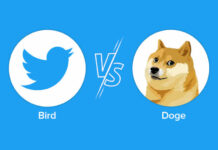Ron DeSantis (Republican governor of Florida) called on President Joe Biden this week to approve a plan to send the internet to Cubans via high-altitude balloons.
IS INTERNET AVAILABLE BY BALLOON?
Yes. Yes. It ended this project in January because it was not financially viable.
Loon balloons were previously providing service in mountainous regions of Kenya as part of a partnership with Telkom Kenya, a local telecom. In the wake of Hurricane Maria, the service provided wireless communications to Puerto Rico. Loon joined forces with AT&T in order to provide service.
HOW DOES IT WORK?
Loon balloons were cell towers about the same size as a tennis court. They floated at 60,000 to 75,000ft, or 11-14 miles (18,000-23,000m, or 18-22 km), above the Earth. This is well above commercial jetliners routes. The balloons were made of common plastic polyethylene and used solar panels to generate electricity. They could also deliver service to smartphones through a partnership with a local telecom.
According to the company, each balloon could be used by thousands of people. Due to the harsh conditions of the stratosphere, they needed to be replaced every five or six months. The balloons can be very difficult to control. Salvatore Candido was the chief technology officer at Loon. He wrote in a blog post December 2020 that “Navigating balloons across the stratosphere is always been difficult.” The company developed algorithms to track wind patterns.
What equipment was required?
Loon stated that, beyond the balloons, the network integration needed with a telecom company to provide service and equipment on the ground. The Cuban government won’t grant permission.
COULD A NETWORK BETWEEN AFAR AND AFTER BE SET-UP?
Yes. Yes. Loon used multiple balloons for connections that went beyond the required ground link. Loon claimed that the connection leapt 1,000 km, or approximately 620 miles, using 7 balloons in a 2018 test. It also bridged a wireless link of 600 km, or approximately 370 miles between two balloons. At their closest, Cuba and Florida are just 100 miles (160 km) apart.
Experts aren’t certain it would be easy to establish a guerrilla internet network for Cuba in this manner. To transmit a connection to Cuba it would require a band of radio frequency spectrum that is not being used. Typically, national governments control spectrum use. Jacob Sharony of Mobius Consulting, a mobile- and wireless consulting firm, stated that anyone trying to do this would need to find a block of spectrum that isn’t being interfered with.
According to Tim Farrar, a consultant in satellite communications, balloon- and drone-powered networks won’t be economically viable long-term. Farrar stated that while they are suitable for providing communications in times of war or disaster, their transmission capabilities are not sufficient to provide services for the entire population of Cuba.
Another problem: The Cuban government might also attempt to block the signal.
Who IS INTERESTED IN THE CUBA EFFORT?
DeSantis supported the balloon idea along with two Cuban-American Congressmen from the Miami Area, Reps Maria Salazar and Carlos Gimenez. They were joined by Brendan Carr, FCC commissioner, and Marcell Felipe, Cuban-American lawyer and businessman, and Marcell Felipe, museum director.
Felipe stated that he had been in contact for around two years with a contractor to deploy these balloons cost-effectively in Cuban airspace. However, he declined to identify the company. Felipe stated that his plan would allow internet connectivity to be transmitted directly to mobile phones in the island, without any involvement from ground providers. Felipe stated that it would not be possible for the Cuban government “in any significant way,” but he did not cite any evidence.
None of the supporters gave a cost estimate. Salazar stated that she believed the plan could be fully funded if the federal government supported it.
What is INTERNET ACCESS LIKE in CUBA?
Internet access in Cuba was expensive and scarce until recently. The state telecom monopoly allowed Cubans to get internet access starting in December 2018. Today, more than half of Cubans have internet access.
Human Rights Watch says that the Cuban government restricts independent media outlets and censors information available online to Cubans. In an effort to stop protests, it blocks internet access.















